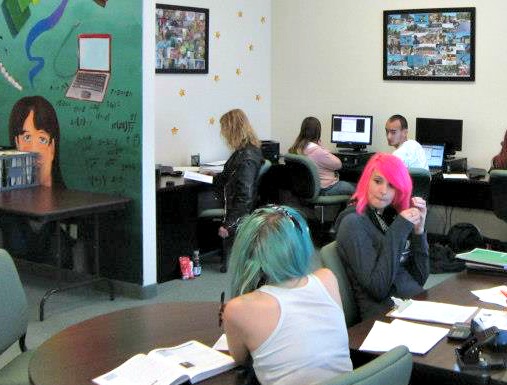Regular K-12 public institutions have many challenges. They have overcrowded classrooms, underpaid teachers, and unacceptable high school graduation and college attending rates.
Joe Bageant, author of Revenge of the Mutt People wrote, “Now that education has been reduced to just another industry, a series of stratified job training mills, ranging from the truck driving schools to the state universities, our nation is no longer capable of creating a truly educated citizenry. Education is not supposed to be an industry. Its proper use is not to serve industries, either by cranking out feckless little mid-management robots or through industry purchased research chasing after a better hard-on drug. Its proper use is to enable citizens to live responsible lives that create and enhance their democratic culture. This cannot be merely by generating and accumulating mountains of information, facts without cultural, artistic, philosophical and human context or priority.”
An alternative to this has been charter schools to provide more freedom to educators. According to the National Alliance for Public Charter Schools, “Charter schools are public, tuition-free schools that are open to all students. Often operated independently from traditional school district, charter schools provide high quality instruction from teachers who have the autonomy to design a classroom that fits their students’ needs. They are led by dynamic principals who have the flexibility to create a school culture that fosters student performance and parent satisfaction.”
I spoke with former Career Pathways Coach, Mateo Pulido from John Muir Charter Schools who said, “These [charter] schools provide room to grow as an educator, a creative growth needed to learn how to be an effective teacher. I had flexibility in how I wanted to teach students and the classes were small so they were manageable, which also allowed me to build a solid foundation with students.” He also spoke about the relationships the charter school built with community partners such as with GRID Alternatives Inland Empire who taught students how to enter the green job field and the Operation Safe House (Cup of Happy) a mental health resource for students. I give a big kudos to the schools ensuring external resources for their students, because without them students struggle to find jobs, careers, and other necessary resources.
Like most things we like, they aren’t perfect and have flaws. Although I am a supporter of charter schools, I still believe that there are some recommendations needed to improve the quality of education. In theory, these institutions are created to be flexible, which doesn’t guarantee a structure.
Pulido explained to me, “Because of the lack of structure, there’s not accountability. This often led me to have no direction in terms what I should be doing at work.”
Personally, I am not a firm believer of hierarchy, but I do believe that rules and policy need to be put into place for maximized learning. It necessary for employees to be provided with examples, guidelines and etc. if they are being held accountable. I think a solution to this would be to include employees at the beginning of their employment an opportunity to spell out needed guidance and boundaries together, eventually resulting in policy or rules made clear to everyone working in the school.
Something that charter schools have to deal with is funding. This is a problem for educational institutions everywhere, but some more than others. Charter schools sites and jobs are not permanent, and they often don’t last long unless because of the lack of funding. One example of this is the role Mateo Pulido had, all career pathways coaches were let go and a school site was shut down along with that. We need to rethink the way we bring in funding, especially since it isn’t always permanent. In addition, if a charter school is being opened up, it needs to have a long term plan in order to sustain this resource for students. There’s no point in opening up a resource for a short amount of time, students are better off having to deal with regular K-12 public institutions. I propose that there be small donations from the community annually along with conversations with bigger funders, but there needs to be funding coming from a variety of donors to make sure that these schools are financially sustainable.
Rocio Aguayo
Latest posts by Rocio Aguayo (see all)
- Perspectivas desde Inland Empire: Como los Ingresos Afectan los Resultados de Aprendizaje en los Estudiantes - January 31, 2019
- Perspectives from the Inland Empire: How Income Impacts Student Learning Outcomes - January 30, 2019
- Luchadora Alex Beltran esta en un Empate Con el Titular de San Bernardino en el Consejo Municipal - December 4, 2018
- Luchadora Alex Beltran is Neck and Neck with San Bernardino Incumbent in City Council Race - December 4, 2018
- Los Jóvenes Pueden Hacer Una Diferencia en Esta elección, Incluso si son Demasiado Jóvenes para Votar - November 6, 2018

